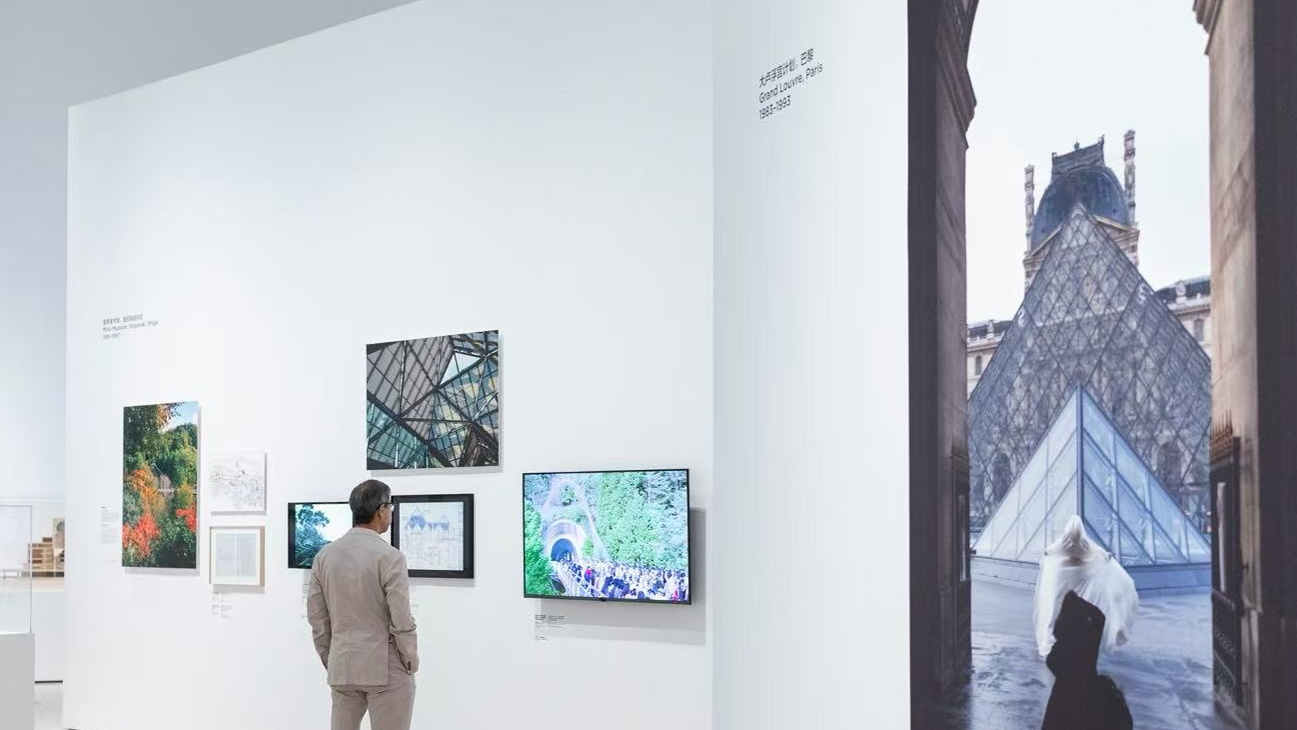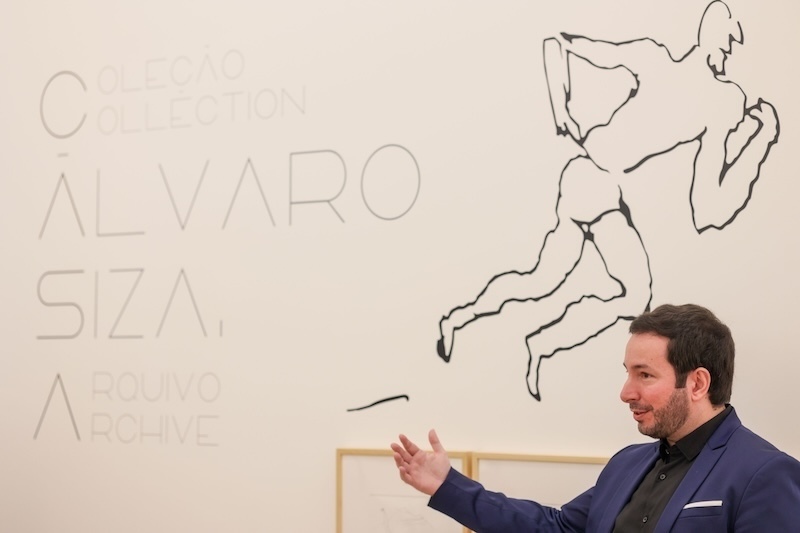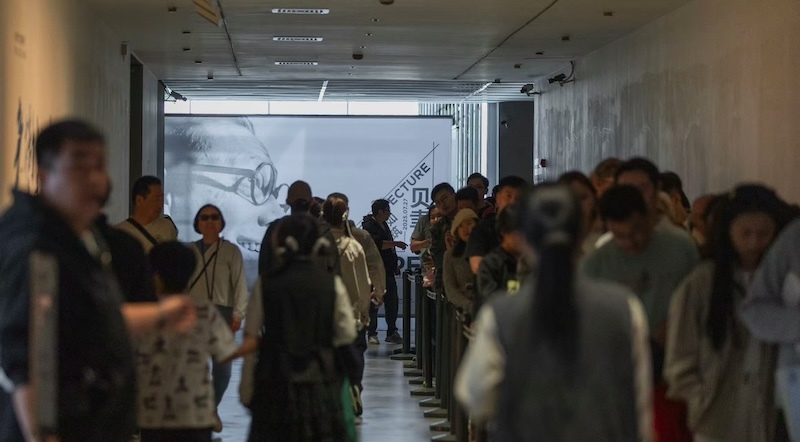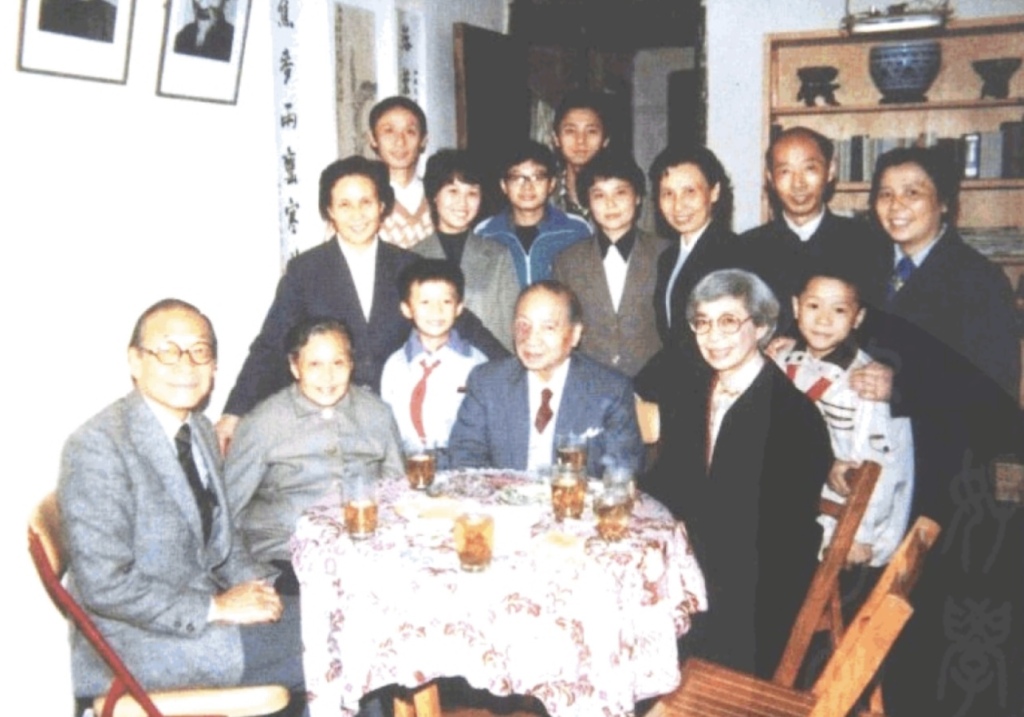
"Knock, knock, knock, buy some sugar porridge, three liters of rambutan and four liters of shells. Eat the meat and return the shells."
On June 28, the Suzhou Folk Museum reopened after a year of closure. Amid the soft and sticky Wu-dialect nursery rhymes, The Paper reporter felt the memory of old Suzhou's food culture and the rich memories of the city life in the ancient city of Gusu. This historical building is the former ancestral hall of I.M. Pei's family.

In 1989, I.M. Pei (first from left) returned to Suzhou and took a photo with his wife, Bei Zuwu, and their relatives and friends. Bei Zuwu was the first president of the Suzhou Kunqu Opera Research Society.

Suzhou Folk Museum is located at No. 32 Panru Lane, Suzhou. It was originally the Bei Clan Ancestral Hall (four courtyards behind the World Heritage Lion Grove Ancestral Hall), which is the family ancestral hall of the master architect I.M. Pei. In 1917, Bei Runsheng (a pigment tycoon) of the Bei family purchased the Lion Grove, which was built in the Yuan Dynasty, and carefully renovated it. At the same time, it expanded eastward, eventually laying the foundation for today's pattern consisting of ancestral halls, residences, and courtyards. 40 years ago, Suzhou City built the country's first museum with the theme of urban folk customs with the ancestral hall as the museum building, and since then, the custom memory and market life of old Suzhou have been solidified in the exhibition of the four courtyards. Last summer, the museum was closed for comprehensive upgrading and renovation. After a year of construction and exhibition, it finally reopened to the public with a brand new look on June 28.

Suzhou Folk Museum, viewed from a distance, was originally the ancestral hall of the Bei family. It is the fourth entrance of the Lion Grove Ancestral Hall.

Ancient buildings in Suzhou Folk Museum
"Misty and rainy Jiangnan, this place is the best Suzhou."
When you enter the Suzhou Folk Museum, the outer wall of the entrance is decorated with simulated raindrops, creating a misty atmosphere, as if you are walking into a slightly damp bluestone old street, and from this you can feel the seasonal festivals, food customs, and folk customs of the Wu area.
On the front wall, the hexagonal display board is just like the hexagonal window of Suzhou garden, delicate and beautiful. Going up the stairs to the north is the main exhibition area of the Folk Custom Museum, which brings together the local folk culture of Suzhou and consists of three exhibition halls: "Enjoy the Four Seasons", "Three Meals" and "Celebrate Life".
Enjoy the Four Seasons: Start with the Voices of Children
"On the first day of the first lunar month, eat dumplings; in February, fly kites; in March, buy green dumplings; in April, silkworms go up the mountain to make cocoons; in May, eat rice dumplings; in June, fan yourself; in July, use a cattail leaf fan to swat mosquitoes; in August, peel watermelon seeds; in September, climb high to pick sycamore seeds; in October, peel early-blooming tangerines; in November, bask in the sun and play shuttlecock; in December, roll dumplings."
As you enter the exhibition hall, a children's song keeps lingering in your ears. The various scenes from the beginning of the year to the end of the year seem to bring you back to the carefree days of your childhood.
"Festivals and festivals are a set of social life systems formed naturally by people in accordance with the time and nature of the weather, which permeate every aspect of life, including food, clothing, housing, transportation, production and life. The nursery rhyme we heard is called "Customs of December". The important festivals, representative foods and special activities of each month are actually all in these children's voices." said Xu Jie, director of the Party and Government Office of Suzhou Museum and content planner of Suzhou Folk Museum.
The reporter of The Paper saw at the scene that the "Four Seasons" exhibition hall includes four units: "Spring Breeze Like Wine", "Summer Breeze Like Tea", "Autumn Breeze Like Smoke" and "Winter Breeze Like Candy". The octagonal three-dimensional installation in the middle of the exhibition hall can be seen in the outer circle to see the four seasons of Suzhou people in spring, summer, autumn and winter, while the inner circle focuses on the traditional customs of Suzhou during the Lantern Festival, Dragon Boat Festival, Mid-Autumn Festival and New Year's Eve, presented in the form of dynamic installations. The central cabinet presents the "Five Roads of Wealth Gods Parading Guards" small ornaments, a star cultural relic in the collection of Suzhou Museum.

The modern "Five-Way God of Wealth Procession" small decorations are on display. Note: Some of the pictures in this article were taken by Li Mei, a reporter from The Paper
"The procession of the God of Wealth is also known as the God of Wealth's meeting, in which the God of Wealth is carried out on the streets for a parade. The procession of the God of Wealth in Suzhou is called Jie Lu Tou, and the 'Five-Route God of Wealth Procession Ceremonial Guards' originates from the Suzhou people's belief in the Five-Route God of Wealth." Xu Jie said in an interview with The Paper on the spot, "These ceremonial guards were made by Suzhou craftsmen using clay sculpture, lacquer, wood carving, silk weaving and other techniques. Through more than 100 exquisite components such as sedan chairs, flags, and weapons, the grand occasion of the Five-Route God of Wealth Procession was restored. The overall layout coincides with the 'golden gongs and firecrackers, and sacrificial offerings' recorded in the Qing Jia Lu to welcome the gods. This type of folk decoration not only has the display function of a commercial window, but also reflects the collective wish of the people in Wu for 'the five roads to be open and wealth to gather in all directions'."
Three meals: a bowl of noodles, a cup of tea, and a piece of cake
"Knock, knock, knock, buy some sugar porridge, three liters of rambutan and four liters of shells. Eat the meat and return the shells."
In the soft and sticky Wu language nursery rhymes, the second exhibition hall "Three Meals" uses "a bowl of noodles", "a cup of tea" and "a piece of cake" as clues to interpret Suzhou's "eating in season" food tradition: Wu New Year's Eve dinner, Suzhou-style hot pot, Suzhou-style noodles, Suzhou-style cakes, Biluochun tea...
The scenery of the four seasons is different, and the freshness of the four seasons is also different. Wu's cuisine advocates nature, follows the order of the seasons, and emphasizes "eating in season". In spring, people eat fresh food, in summer, they eat light food, in autumn, they enjoy the flavor, and in winter, they focus on nourishing food. They use local ingredients to preserve the flavor and freshness of the ingredients themselves. The dining table is a flowing record of the phenology of the south of the Yangtze River.
"In the fragrant Biluochun tea soup, I saw the beautiful spring scenery of Jiangnan, China." The famous Italian poet Dante once praised it this way. The exhibition board of the "A Cup of Tea" unit shows the production process of Suzhou's famous tea Biluochun. In the display cabinet are some tea sets for brewing and tasting tea and related utensils for holding tea sets, including teapot barrels, teacups, teapots, trays, etc.
A camel pole selling snacks brought back many childhood memories.

Camel
"Green and white dumplings go well together, and they are a delight to have on a jade plate." Cakes and dumplings constitute the sweet taste of Suzhou's various food customs, and are also the source of happiness in Suzhou life. When the steamer is opened, the warm aroma of glutinous rice accompanies Suzhou people through the four seasons. A piece of cake, a bowl of sugar porridge, a plate of pan-fried dumplings, a cage of crabs... cakes and snacks enrich the taste buds of Suzhou people and add a strong touch to "eating in season". In the display cabinets of this unit, visitors can see some modern food utensils, food boxes and molds, which are full of life. Next to it is a group of food baskets for carrying out and holding food, and on the far right is a group of kitchen utensils, including buckets for holding rice and flour, and molds for making cakes and dumplings, from which you can feel the appearance of the old Suzhou kitchen.
Lifelong Ritual: Presenting the Life Ritual of Suzhou People
The "Li Yi Sheng" exhibition hall retains and highlights the architectural features of the original "Bei Clan Ancestral Hall" that combines Chinese and Western styles. The carefully preserved modern fireplaces and decorative tiles demonstrate a unique aesthetic style. The ingenious suitcase-style display cabinet connects the four stages of "First Coming into the World", "Youth", "Wedding Night" and "After Dusk", as if it is an ongoing life journey, systematically presenting the life etiquette of Suzhou people.

"Li Yi Sheng" exhibition hall
The patchwork clothes carrying beautiful meanings and the exquisite vermilion lacquer sedan chair made of more than a thousand parts, the ultimate craftsmanship, hide the Suzhou people's yearning and pursuit for a better life.
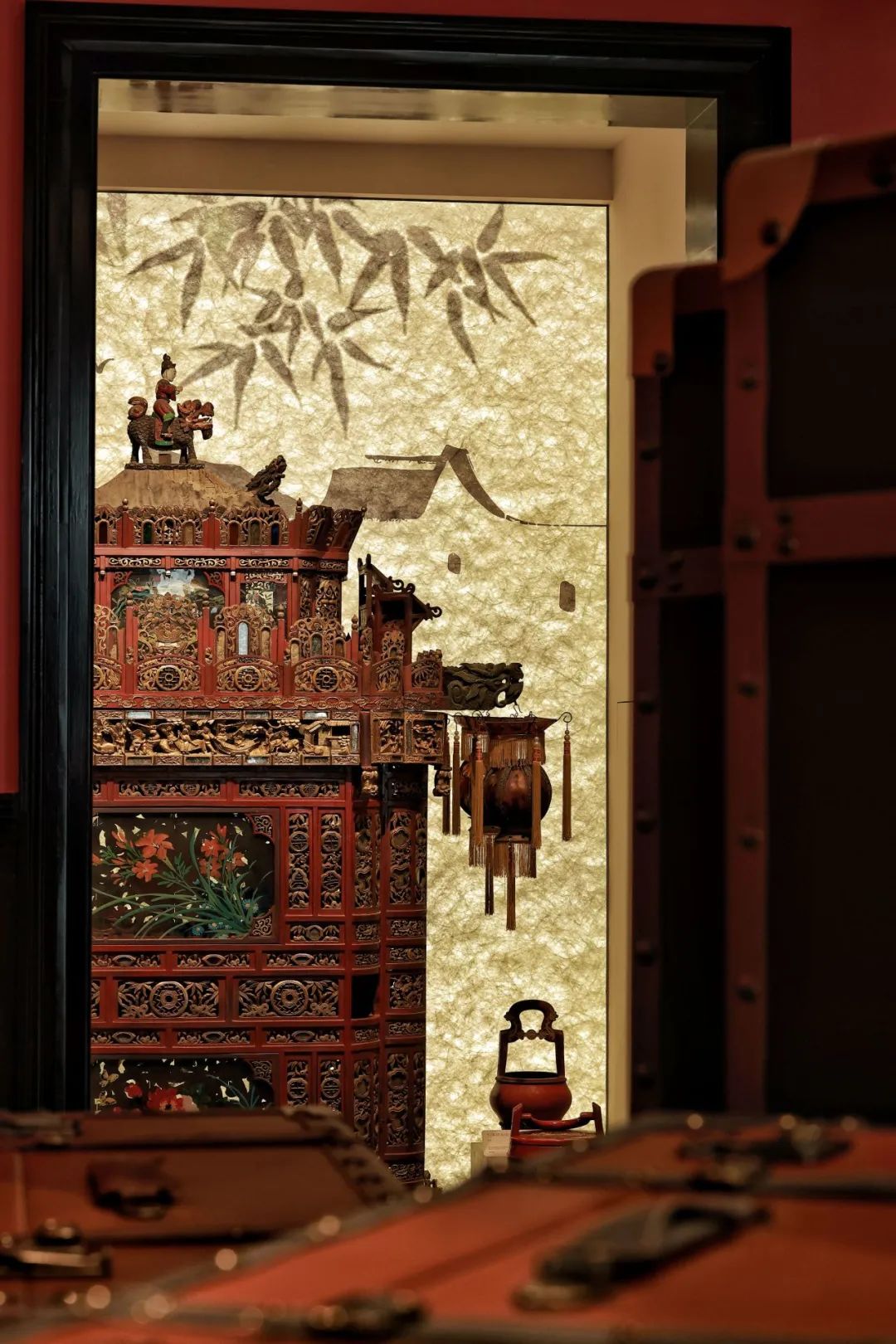

Patchwork Clothes
In the old days, wealthy families in Suzhou would often set up a birthday hall when celebrating birthdays. On the wall in the middle of the hall, there would be a "Shou" character or a picture of a hundred longevity stars or a picture of the God of Longevity. On both sides, there would be couplets of longevity. On the long table in front of the wall, there would be statues of the three stars of fortune, longevity and wealth. On the table in front of the long table, there would be fruits and vegetables, candles and incense. A Taohuawu woodblock New Year painting "Shou Zi Tu" on display is a representative work of Suzhou Taohuawu woodblock New Year paintings. It is printed in cyan, red, purple and black colors. The composition frame is a "Shou" character. The "Shou" character is decorated with the Eight Immortals, peaches, pine cranes, deer and other contents, all of which are good wishes for longevity and eternal happiness.
At the end of the exhibition, we came to the "Time Photo Studio". Looking into the window, the old-fashioned camera was looking back at the vivid images of Suzhou over the past century. Water towns, bridge shadows, streets, fireworks, people's homes... In the mottled light and shadow, the elegant Wu dialect and the vitality of the market in old Suzhou came to life, freezing the collective memory of a city and several generations with light and shadow.
It is reported that in response to the opening of the Folk Museum, Suzhou Museum has specially designed a series of folk cultural and creative products, with the first batch of nearly 30 new products presenting Suzhou's "eating in season" eating habits.
Tips:
Suzhou Folk Museum (No. 32, Panru Lane, Suzhou City)
Opening hours: Tuesday to Sunday 9:00-17:00
Summer extension: July 1st - August 31st, every Tuesday to Sunday 9:00-20:00
